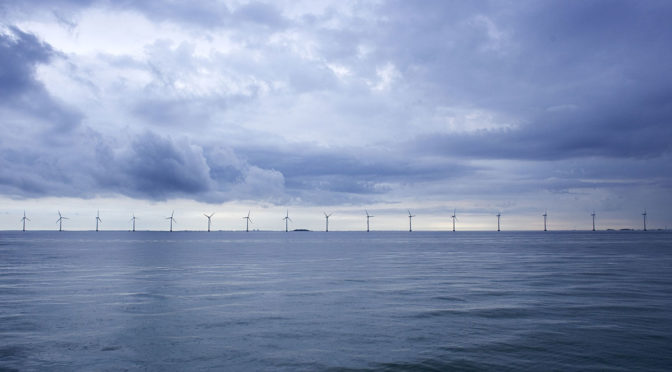The whole planet can run on wind power if we really needed to. A new study postulates that a 3 million km square of open ocean area in the windy North Atlantic could produce enough energy to satisfy the needs of the entire human species during the winter months, while it could cover the electricity needs of North America and Europe during the summer.
The goal of the study was to determine if the downward winds of the ocean held more energy than the same wind over the land. The research points hard toward this being true:
In recent years, a growing body of research argues that the rate of generated power is limited to around 1.5 W m?2within large wind farms. However, in this study, we show that considerably higher power generation rates may be sustainable over some open ocean areas. In particular, the North Atlantic is identified as a region where the downward transport of kinetic energy may sustain extraction rates of 6 W m?2 and above over large areas in the annual mean.
https://youtu.be/5kKNqkTE2rE
The researchers found that up to 4 times more wind power per square meter can be extracted from open ocean farms than current land-based techniques. With this increased wind intensity, it was discovered that 3 million wind turbines, each placed in its own 1 sq kilometer area, in this North Atlantic ocean could produce an annual amount of 18TWh of energy – equivalent to humanities current needs.
Several caveats were introduced by the authors – the first of which had to do with seasonality.
The amount of energy produced varied greatly between the winter and summer. Winter time production would actually overproduce the word’s ‘energy’ needs – whereas summer would only meet ‘electricity’ in North America and Europe. Note in the two images below of seasonality – how the wind curve on the left and the solar power curve on the right inversely complement each other so nicely!
The second major caveat was that two important technologies for open ocean wind farms haven’t yet been fully developed. These wind farms would be in one-mile deep water – the closest we’ve come to it are the first ‘floating wind farms‘ that are being built as we speak by Statoil off of the coast of Scotland. The Statoil wind farms are built to handle waves greater than 65 feet, however, the water depth will range from 310 ft to 390 feet – a far cry from 5,280 ft needed in this study.
A second technological challenge is developing and deploying the large cables that would be needed to move the electricity. There has been much talk around the world about building a global HVDC power network – so it’s not out of the question that the electricity can be moved. However, the only progress I’ve seen anywhere on undersea electricity cables from renewables is a plan to push solar from Western Australia to Indonesia – a much shorter distance than from the North Atlantic ocean to either Europe or North America.
The last major challenge of the project was that there would be a significant localized cooling effect. The author modeled that if we actually did build a 3 million sq km wind farm in the Northern Atlantic we might actually extract enough heat energy to lower the temperatures of the local Arctic region by 13°C! This effect is very local and can be mitigated by spreading the wind farms.
Electrek’s Take
Elon Musk often mentions that all of the USA could be powered by 100 sq miles of solar power. In 2009, the Land Art Generator Initiative made a beautiful document showing how much solar power would be needed to power the world – then they distributed it to the regions around the world where the energy would best be used. Looking at the wind bands below we see there is a strong potential to distribute these wind farms much closer to their needed regions. Clearly, the region in the North Atlantic seems the best in all of the northern hemisphere.
One of the greater challenges of fully moving to renewable energy when dependent on solar power alone is seasonality – in the winter there is simply less sunshine hitting the ground. The production curves of wind energy and solar power are almost perfectly opposite each other. The question becomes a lot less ‘is it possible,’ but instead ‘does it make sense based upon our needs.’






